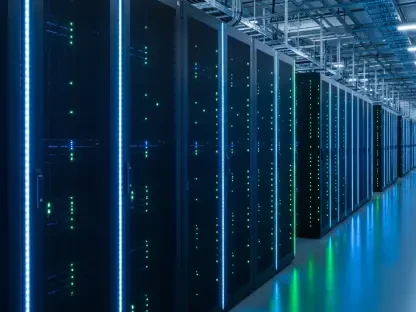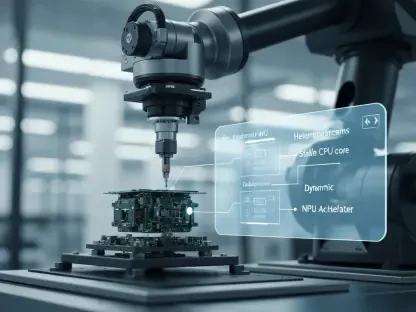In an era where technological innovation races ahead at breakneck speed, the adoption of artificial intelligence (AI) and other cutting-edge tools like cloud computing has become a top priority for many organizations striving to maintain a competitive edge. However, a recent survey of 1,000 senior executives reveals a troubling reality: while the drive to implement solutions such as agentic AI is stronger than ever, the readiness of cybersecurity infrastructure often lags far behind. This gap poses significant risks, from data breaches to costly downtime, as businesses prioritize speed over security. The role of Chief Information Security Officers (CISOs) has never been more critical, as they must navigate the delicate balance between enabling innovation and safeguarding against emerging threats. With mounting pressures from business leaders to adopt new technologies quickly, the question remains whether cybersecurity strategies can evolve fast enough to mitigate the inherent dangers of rapid deployment.
Navigating the Divide Between Innovation and Security
Bridging the Gap Between Business and IT Priorities
A significant challenge in the current landscape is the stark disconnect between business executives and IT leaders when it comes to technological adoption. Business leaders, with 75% believing that delays in implementing AI could jeopardize their market position, often push for rapid rollouts to stay ahead of competitors. In contrast, IT leaders frequently highlight infrastructure limitations, with 43% acknowledging that their systems are ill-equipped to handle advanced technologies. This misalignment creates a dangerous scenario where deployments are rushed, often sidelining critical security considerations. The consequences can be severe, as vulnerabilities are exploited in the haste to innovate. CISOs find themselves in a pivotal role, tasked with aligning these differing priorities to ensure that enthusiasm for new tools does not compromise the organization’s safety. Without a unified approach, the risk of data breaches and system failures looms large, threatening both financial stability and reputation.
Reframing Security as an Enabler of Progress
Compounding this issue is the widespread perception among business leaders that security measures act as barriers to innovation, with two-thirds citing data and cloud security as major obstacles to adopting new technologies. This mindset often relegates cybersecurity to an afterthought, rather than a foundational component of technological advancement. To counter this, CISOs must shift the narrative, positioning security as a vital enabler that supports safe and sustainable innovation. By embedding protective measures into the early stages of technology planning, organizations can avoid the pitfalls of reactive fixes after vulnerabilities are exposed. This proactive stance requires collaboration across departments, ensuring that security protocols are not seen as hindrances but as essential frameworks that allow for confident exploration of AI and other emerging tools. Changing this perception is no small feat, but it is a necessary step to foster an environment where innovation and resilience go hand in hand, minimizing risks before they escalate into crises.
Building Resilience Against Emerging Threats
Shifting from Reactive to Proactive Cybersecurity
One of the most alarming findings from the survey is the predominantly reactive nature of cybersecurity strategies in many organizations, with 85% of respondents focusing on incident response rather than prevention. This approach leaves companies vulnerable to attacks that could have been mitigated with foresight, resulting in significant financial losses—41% of executives reported that just one hour of unplanned downtime costs between $100,000 and $500,000. The complexity of managing multiple cloud platforms, with most organizations juggling seven different types, further exacerbates the problem by expanding the attack surface. CISOs must advocate for a shift toward proactive measures, such as regular risk assessments and robust data management practices, to anticipate and neutralize threats before they strike. Addressing cloud complexity is equally critical, as streamlined systems can reduce vulnerabilities. Without this transition, organizations remain at the mercy of inevitable breaches, unable to fully harness the potential of technologies like AI.
Preparing for Long-Term Challenges Like Quantum Threats
Looking beyond immediate concerns, the survey also highlights a growing unease about long-term risks such as quantum cryptography threats, with 71% of organizations admitting they are unprepared to defend against them. Only 14% have infrastructure in place for post-quantum security, revealing a significant gap between awareness and action. As quantum computing advances, the potential to break current encryption methods becomes a pressing issue that cannot be ignored. CISOs need to prioritize research and investment in quantum-resistant technologies now to avoid catastrophic vulnerabilities in the coming years. Drawing inspiration from a small cohort of “Innovation Leaders” who have begun addressing these risks through industry-specific solutions and proactive strategies, other organizations can start building the necessary defenses. The time to act is now, as delaying preparations could leave critical data exposed to future threats that are already on the horizon, undermining trust and stability.
Charting a Path Forward with Strategic Alignment
Learning from Innovation Leaders
Reflecting on the past, it became evident that a select group of organizations, often termed “Innovation Leaders,” had set a powerful example by integrating security into their technology adoption strategies. These pioneers invested heavily in tailored cloud solutions and prioritized data management, ensuring that their infrastructure supported AI-driven workloads without compromising safety. By closely aligning business and IT objectives, they managed to mitigate risks while pushing the boundaries of innovation. Their success underscored the importance of viewing cybersecurity not as a constraint but as a cornerstone of progress. For CISOs who observed these efforts, the lesson was clear: adopting similar proactive measures and fostering cross-departmental collaboration could transform challenges into opportunities, providing a blueprint for others to follow in balancing technological advancement with robust protection.
Modernizing Foundations for Future Success
As discussions around AI and emerging technologies evolved, the need for modernization of outdated infrastructure stood out as a critical takeaway. Many organizations had operated on legacy systems that struggled to support the demands of generative and agentic AI, often leading to vulnerabilities. CISOs who tackled these issues head-on recognized that reducing cloud complexity and preparing for quantum risks were non-negotiable steps in safeguarding their enterprises. The path forward involved not only investing in cutting-edge security solutions but also closing the gap between business urgency and IT caution through strategic planning. By embedding resilience into every stage of technology deployment, companies could confidently navigate the next wave of disruption. This focus on building a solid foundation ensured that innovation was not just a fleeting achievement but a sustainable advantage, protecting against both current and future threats with unwavering diligence.









